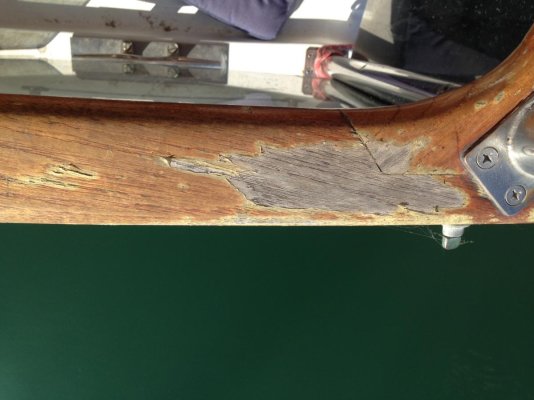camdunning
Veteran Member
Hi TW,
Another question for the wisdom of the group here. I have some teak rails that are starting to show serious abuse (see pictures below). I'm not sure if they're sealed with varnish or cetol, and am wondering how best to go about repairing this. My initial thought was to get some 120 or 200 grit sand paper, sand down to raw wood, and re-coat with either cetol or varnish to match the rest of the boat. But after talking to someone wiser than me in the harbor today, he suggested getting a heat gun and stripping the old stuff off. Or, if its cetol, just sanding down the exposed parts and doing a spot fix.
Any recommendations, or suggestions on how to tell if this is cetol or varnish?
Thanks in advance.
Another question for the wisdom of the group here. I have some teak rails that are starting to show serious abuse (see pictures below). I'm not sure if they're sealed with varnish or cetol, and am wondering how best to go about repairing this. My initial thought was to get some 120 or 200 grit sand paper, sand down to raw wood, and re-coat with either cetol or varnish to match the rest of the boat. But after talking to someone wiser than me in the harbor today, he suggested getting a heat gun and stripping the old stuff off. Or, if its cetol, just sanding down the exposed parts and doing a spot fix.
Any recommendations, or suggestions on how to tell if this is cetol or varnish?
Thanks in advance.
Attachments
Last edited:





